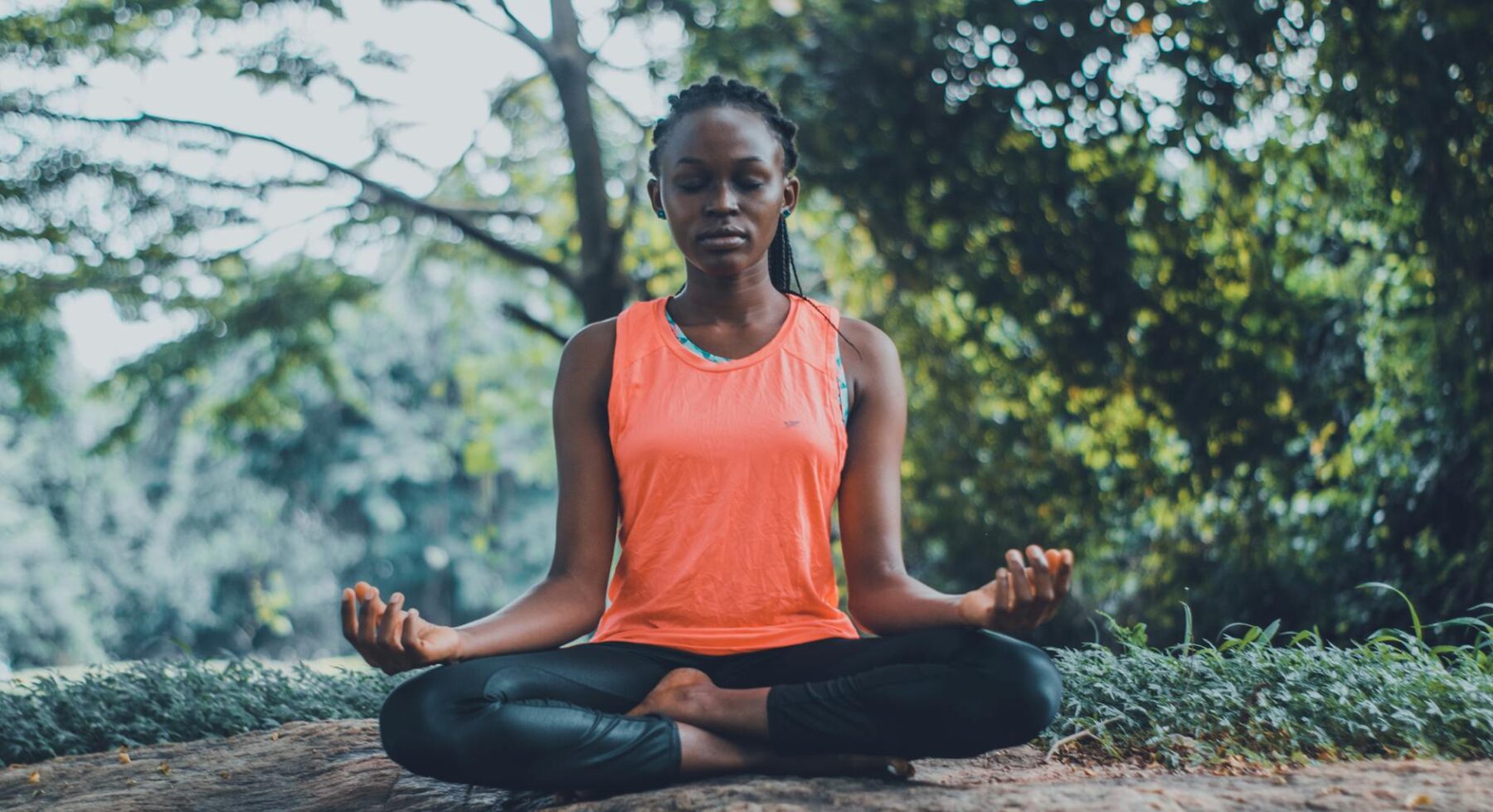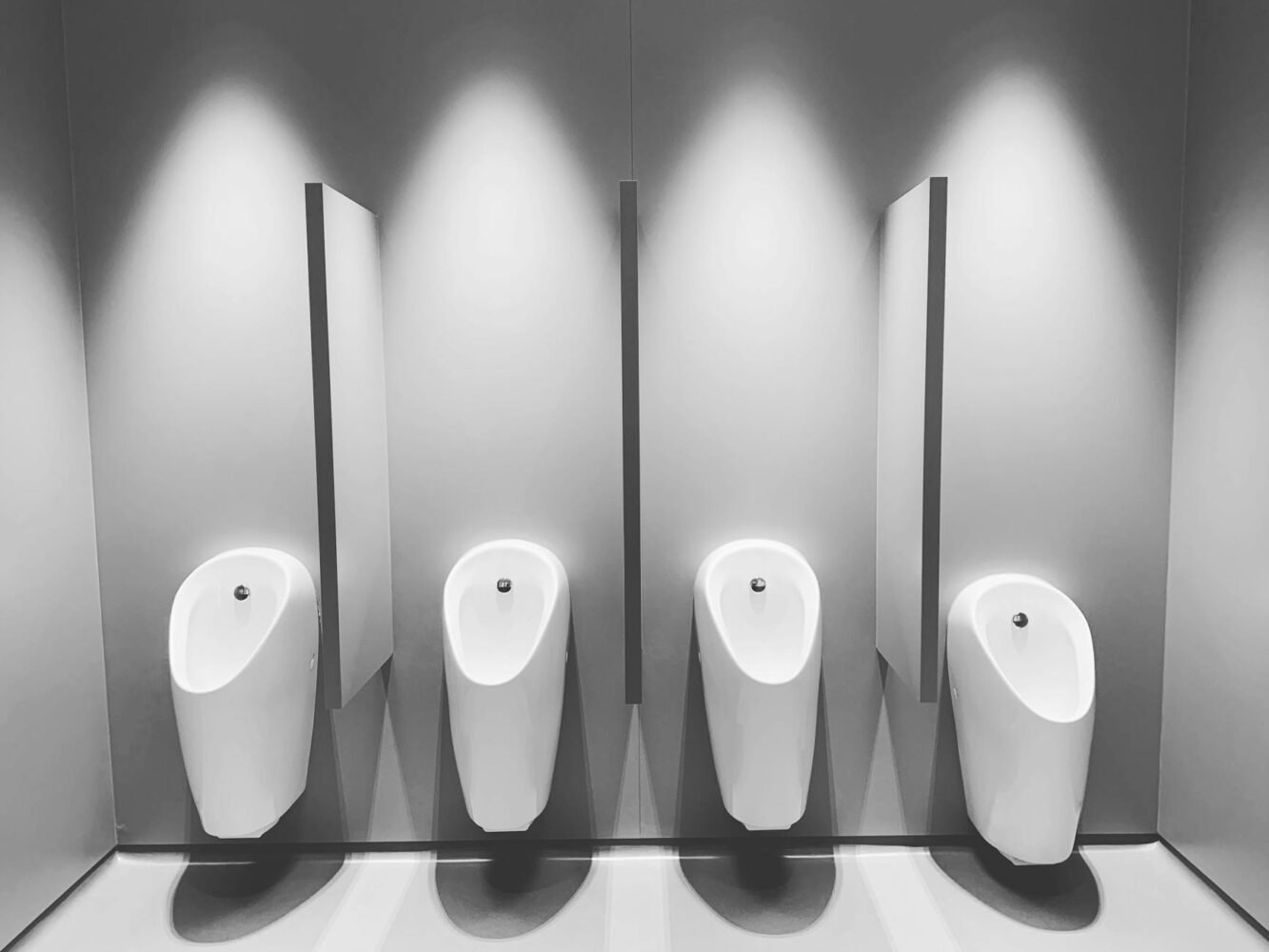Your mind jumps from task to task like a pinball, making it nearly impossible to focus on what matters most. You’re not alone—millions of busy professionals, students, and parents struggle with scattered attention in our constantly connected world.
Quick meditation for focus offers a practical solution that fits into even the busiest schedules. You don’t need hours of sitting in silence or years of training to see real results. Just a few minutes of targeted meditation for concentration can sharpen your mental clarity and boost productivity throughout your day.
This guide is perfect for anyone who wants better focus but feels too busy for traditional meditation practices. Whether you’re a stressed-out executive, overwhelmed student, or multitasking parent, these mini meditation techniques will work with your lifestyle, not against it.
We’ll explore the brain science that makes short meditation sessions so effective for concentration. You’ll discover proven micro meditation practices you can do anywhere—from your office desk to your car before a big meeting. Plus, we’ll show you how to weave these brief meditation exercises seamlessly into your existing daily meditation routine, so better focus becomes as automatic as your morning coffee.
Understanding the Science Behind Quick Meditation for Focus

How meditation rewires your brain for better attention
Your brain literally changes shape when you practice meditation for concentration. Scientists using advanced brain imaging have discovered that regular meditation strengthens the prefrontal cortex – the brain’s CEO responsible for focus and attention control. Even short meditation sessions of just 5-10 minutes trigger neuroplasticity, creating new neural pathways that make concentration easier over time.
The anterior cingulate cortex, your brain’s attention network hub, becomes more active and efficient with consistent practice. This means you can catch your mind wandering faster and redirect it back to your task. Studies show that people who practice quick meditation for focus develop thicker gray matter in areas linked to sustained attention, while regions associated with stress and anxiety actually shrink.
What’s fascinating is that these brain changes happen remarkably fast. Research from Harvard shows measurable improvements in attention-related brain regions after just eight weeks of daily meditation routine practice. Your brain becomes like a muscle – the more you train it to focus during meditation, the stronger your concentration becomes throughout the day.
The role of mindfulness in reducing mental distractions
Mindfulness acts like a mental filter, helping you distinguish between important thoughts and mental noise. When you practice mindfulness for concentration, you’re training your brain to observe thoughts without getting hijacked by them. This skill translates directly to better focus during work, study, or any task requiring sustained attention.
The default mode network in your brain – responsible for mind-wandering and self-referential thinking – becomes less dominant with regular mindfulness practice. Instead of your mind constantly jumping between past regrets and future worries, you develop the ability to stay present and engaged with whatever you’re doing.
Mini meditation techniques teach you to notice when your attention drifts and gently guide it back without judgment. This non-reactive awareness is the secret sauce that makes mindfulness so effective for concentration. You stop fighting distractions and start managing them skillfully.
Research-backed benefits of short meditation sessions
Scientific evidence overwhelmingly supports the power of brief meditation exercises. A landmark study from the University of Washington found that just 10 minutes of daily meditation improved participants’ ability to focus for extended periods and reduced their tendency to multitask destructively.
Neuroscientist Dr. Amishi Jha’s research with military personnel showed that micro meditation practice sessions as short as 12 minutes daily protected attention capacity under high-stress conditions. Participants who meditated maintained their focus abilities while control groups showed significant attention decline.
| Study Duration | Meditation Length | Key Benefits |
|---|---|---|
| 2 weeks | 5 minutes daily | Improved sustained attention |
| 4 weeks | 8 minutes daily | Reduced mind-wandering by 40% |
| 8 weeks | 10 minutes daily | Enhanced working memory capacity |
| 12 weeks | 12 minutes daily | Increased cognitive flexibility |
The benefits compound quickly. Research from Carnegie Mellon University demonstrates that meditation in minutes creates measurable improvements in attention span, emotional regulation, and stress resilience. Even single meditation sessions can enhance focus for hours afterward, making quick practice sessions surprisingly powerful tools for immediate concentration boosts.
Essential Quick Meditation Techniques for Concentration

Focused breathing exercises for instant mental clarity
The 4-7-8 breathing technique delivers quick meditation for focus within just two minutes. Inhale through your nose for four counts, hold your breath for seven counts, then exhale completely through your mouth for eight counts. Repeat this cycle three to four times to activate your parasympathetic nervous system and sharpen mental clarity instantly.
Box breathing offers another powerful approach for immediate concentration benefits. Breathe in for four counts, hold for four, exhale for four, and hold empty for four counts. This creates a rhythmic pattern that calms racing thoughts and centers your attention on the present moment.
Single-pointed breathing meditation requires focusing solely on your natural breath rhythm. Count each exhale from one to ten, then restart at one. When your mind wanders, gently return to counting without judgment. This mini meditation technique builds concentration muscles while providing immediate stress relief.
Body scan meditation in under 5 minutes
Start your body scan by lying down or sitting comfortably with eyes closed. Begin at the crown of your head and slowly move your attention downward. Spend 20-30 seconds noticing each body part: forehead, eyes, jaw, neck, shoulders, arms, chest, abdomen, hips, thighs, calves, and feet.
Notice areas of tension without trying to change anything. Simply observe physical sensations – warmth, coolness, tightness, or relaxation. This brief meditation exercise helps you disconnect from mental chatter and anchor awareness in bodily sensations.
A progressive muscle release variation adds gentle tensing and releasing to each body part. Tense your shoulders for five seconds, then release completely. Move systematically through your body, creating contrast between tension and relaxation that deepens the meditative state.
Mindful observation practices for present-moment awareness
The 5-4-3-2-1 grounding technique engages your senses for instant present-moment awareness. Notice five things you can see, four things you can touch, three things you can hear, two things you can smell, and one thing you can taste. This meditation in minutes practice interrupts anxious thoughts and grounds you in immediate sensory experience.
Choose a single object for focused observation – a candle flame, flower, or even your coffee cup. Examine its colors, textures, shadows, and details for three to five minutes. When thoughts arise, acknowledge them briefly and return attention to your chosen object. This builds sustained attention while cultivating mindful awareness.
Walking meditation transforms any short walk into a concentration practice. Focus entirely on the sensation of your feet touching the ground, the rhythm of your steps, or the movement of your arms. Even a two-minute walk to the bathroom becomes a micro meditation practice when approached with mindful attention.
Mantra repetition for deeper focus
Select a simple word or phrase that resonates with you: “peace,” “calm,” “I am focused,” or traditional mantras like “Om.” Repeat your chosen mantra silently or aloud, allowing the sound vibrations to fill your awareness. The repetition creates a focal point that naturally quiets mental chatter.
Coordinate mantra repetition with your breathing rhythm for enhanced concentration benefits. Say “peace” on the inhale and “calm” on the exhale, or use longer phrases that match your natural breath pattern. This synchronization deepens the meditative state and makes short meditation sessions more effective.
Counting mantras provide structure for busy minds. Repeat your mantra 27, 54, or 108 times using your fingers or mala beads to track progress. This gives your analytical mind a task while allowing deeper awareness to emerge through repetition.
Daily meditation routine integration becomes effortless when you match different mantra practices to specific activities or times of day. Use energizing mantras during morning commutes and calming phrases before important meetings or challenging tasks.
Beat the brain fog and boost your focus instantly with this powerful upgrade.
Setting Up Your Perfect Mini Meditation Environment

Creating a Distraction-Free Space in Any Location
Your meditation environment doesn’t need to be perfect – it just needs to work for you. Whether you’re at home, in your office, or even in a busy coffee shop, you can create a pocket of calm with a few simple adjustments.
Start by choosing a consistent spot where you won’t be interrupted for just a few minutes. This could be your desk chair, a corner of your bedroom, or even your parked car. The key is making this space feel intentionally different from your regular activities. Turn off notifications on your phone or switch it to airplane mode. If you’re indoors, close the door or use a simple “do not disturb” signal that others will recognize.
For quick meditation for focus sessions, lighting matters more than you might think. Dim overhead lights if possible, or position yourself away from harsh fluorescent lighting. Natural light works wonderfully, but avoid facing directly into bright sunlight that might cause eye strain when you close them.
Sound management becomes crucial for mini meditation techniques to work effectively. You don’t need perfect silence – just consistent background noise. If you’re in a noisy environment, consider using noise-canceling headphones or earplugs. Some people actually find that gentle, predictable sounds like air conditioning or distant traffic help them focus better than complete quiet.
Physical comfort supports your mental state during short meditation sessions. Keep a small cushion or folded towel nearby if you prefer sitting on the floor, or simply use a supportive chair. The goal is maintaining an alert but relaxed posture without physical discomfort pulling your attention away from your practice.
Using Apps and Tools to Enhance Your Practice
Technology can become your greatest ally for maintaining a consistent meditation for concentration practice. The right apps transform any device into a portable meditation studio, offering guided sessions specifically designed for brief meditation exercises.
Popular apps like Headspace, Calm, and Insight Timer offer dedicated programs for micro meditation practice, with sessions ranging from two to ten minutes. These platforms provide structured guidance that’s especially helpful when you’re starting out or when your mind feels particularly scattered. Many include progress tracking features that help build momentum and maintain your daily meditation routine.
Meditation timers deserve special attention for their simplicity and effectiveness. Apps like Enso and Meditation Timer Pro offer customizable session lengths with gentle beginning and ending chimes. You can set intervals for breathing cues or mindfulness reminders during longer sessions. Some include ambient sounds like rain, ocean waves, or forest sounds that mask distracting environmental noise.
Wearable devices add another layer of support for meditation in minutes. Fitness trackers and smartwatches often include breathing reminders and guided sessions. The gentle vibration cues help maintain focus without being jarring, and some devices track your heart rate variability to show how meditation affects your stress levels in real-time.
For workplace meditation, browser-based tools work exceptionally well. Websites like Do Nothing for 2 Minutes or Stop, Breathe & Think offer quick access without requiring app installations. These platforms are perfect for spontaneous mindfulness for concentration sessions during busy workdays.
Timing Your Sessions for Maximum Effectiveness
Strategic timing turns sporadic meditation attempts into powerful habits that genuinely improve your focus throughout the day. Your brain has natural rhythms that make certain times more receptive to meditation for better focus practices.
Morning sessions, even just three to five minutes right after waking, set a calm tone for your entire day. Your mind is typically less cluttered with the day’s concerns, making it easier to establish the focused awareness that mini meditation techniques cultivate. Try meditating before checking your phone or starting your morning routine – this creates a buffer between sleep and the day’s demands.
Pre-work meditation sessions work exceptionally well for building concentration that carries into your professional tasks. A brief five-minute session right before starting work helps transition your mind from personal mode into focused productivity. Many people find that this timing makes their first few hours of work noticeably more efficient and less stressful.
Midday breaks offer reset opportunities that combat afternoon mental fatigue. Even two minutes of mindful breathing between meetings or during lunch can restore mental clarity. These micro meditation practice sessions don’t require leaving your workspace – just closing your eyes and following your breath for a few cycles.
Post-work transitions benefit enormously from quick meditation for focus practices. A short session before dinner or evening activities helps you mentally separate from work stress and be more present with family or personal time.
| Best Times | Duration | Primary Benefits |
|---|---|---|
| Upon waking | 3-5 minutes | Sets calm daily foundation |
| Before work | 5-7 minutes | Enhances morning productivity |
| Lunch break | 2-3 minutes | Resets afternoon energy |
| After work | 5-10 minutes | Transitions from work stress |
| Before bed | 3-5 minutes | Promotes restful sleep |
Consistency trumps duration every time. Five minutes daily beats thirty minutes once weekly for building the neural pathways that support sustained concentration and mental clarity.
Overcoming Common Obstacles to Regular Practice

Dealing with Racing Thoughts During Meditation
Racing thoughts are probably the biggest hurdle people face when starting quick meditation for focus. Your mind jumping from grocery lists to work deadlines to that awkward conversation from last week is completely normal. The key isn’t stopping these thoughts – that’s impossible. Instead, acknowledge them without judgment and gently return your attention to your breath or chosen focus point.
When thoughts feel overwhelming during your mini meditation sessions, try the “noting” technique. Simply label thoughts as “thinking” and redirect to your meditation object. This approach transforms mental chatter from an enemy into a neutral observer. Remember, each time you notice your mind wandering and bring it back, you’re actually strengthening your concentration muscle.
Some practitioners find counting breaths helpful for particularly busy mind days. Count each exhale from 1 to 10, then start over. If you lose count, no problem – just begin again at 1.
Finding Time in Your Busy Schedule
The beauty of meditation in minutes lies in its flexibility. You don’t need hour-long sessions to see real benefits. Even 2-3 minute micro meditation practices can significantly improve your focus throughout the day.
Look for these hidden pockets of time:
- While your computer boots up
- During your morning coffee ritual
- In the car before entering the office
- While waiting for meetings to start
- Between tasks as a mental reset
The “transition meditation” approach works wonders for busy schedules. Use brief meditation exercises as bridges between activities. This strategy not only fits into your routine but actually enhances productivity by clearing mental clutter before starting new tasks.
Consider stacking your meditation practice with existing habits. Meditate right after brushing your teeth, before checking emails, or immediately after sitting at your desk. This habit stacking makes consistency much easier to maintain.
Managing Expectations and Avoiding Perfectionism
Many people quit their daily meditation routine because they expect immediate, dramatic results or think they’re “bad” at meditating. Short meditation sessions aren’t about achieving a blank mind or reaching enlightenment – they’re about training your attention and building focus gradually.
Progress in meditation for concentration often feels subtle. You might not notice changes during the practice itself but find yourself less reactive to stress, more focused during work, or sleeping better. These improvements happen gradually, like strengthening a muscle.
Perfectionism kills meditation practice faster than any other obstacle. Some days your mind will feel like a tornado, others like a calm lake. Both experiences are valuable and normal. Bad meditation sessions aren’t failures – they’re opportunities to practice patience and self-compassion.
Set realistic goals: aim for consistency over intensity. Meditating for 3 minutes daily beats sporadic 20-minute sessions. Track your practice with simple checkmarks rather than rating session quality.
Staying Consistent When Motivation Drops
Motivation naturally ebbs and flows, but consistency shouldn’t depend on feeling motivated. Create systems that support your mindfulness for concentration practice regardless of your mood.
Start embarrassingly small. If 5 minutes feels too long, try 2 minutes. If 2 minutes feels challenging, start with 30 seconds. The goal is building the habit loop, not achieving meditation mastery. Once the routine becomes automatic, you can gradually extend duration.
Use environmental cues to trigger your practice. Keep a meditation app icon visible on your phone, place a meditation reminder note where you’ll see it, or set a gentle daily alarm. Visual and auditory prompts help bypass motivation requirements.
Track your practice visually with a simple calendar or habit tracker app. Seeing your streak builds momentum and makes skipping feel less appealing. When you do miss a day, restart immediately rather than waiting for Monday or next month.
Consider accountability partners or meditation groups. Sharing your commitment with others creates gentle external pressure that helps during low-motivation periods. Even online communities can provide the social support needed to maintain consistency.
Remember that self-discipline is like a muscle that gets stronger with use. Each time you meditate despite not feeling like it, you build resilience that extends beyond your meditation practice into all areas of life requiring focus and concentration.
Integrating Micro-Meditations Into Your Daily Routine

Morning focus boosters before work begins
Starting your day with quick meditation for focus sets the tone for enhanced concentration throughout your entire morning. A simple 3-minute breathing exercise while your coffee brews can dramatically shift your mental state from groggy to alert. Try the “5-4-3-2-1” technique: breathe in for 5 counts, hold for 4, exhale for 3, pause for 2, then repeat for 1 minute.
The shower meditation works perfectly for busy mornings. Feel the water temperature, notice the sensations on your skin, and focus on the present moment for just 2-3 minutes. This mini meditation technique doesn’t require extra time since you’re already showering.
Before checking emails or diving into tasks, spend 2 minutes doing a body scan while still in bed. Start from your toes and mentally check in with each body part, releasing tension as you go. This micro meditation practice helps clear mental fog and prepares your brain for focused work.
| Morning Technique | Duration | Best Time |
|---|---|---|
| Breathing exercise | 3 minutes | While coffee brews |
| Shower meditation | 2-3 minutes | During morning routine |
| Body scan | 2 minutes | Before getting out of bed |
Midday reset techniques for sustained concentration
Energy naturally dips around midday, making this the perfect time for meditation in minutes to restore mental clarity. The “desk meditation” requires no special setup – simply close your eyes, place both feet flat on the floor, and focus on your breath for 60 seconds. This brief meditation exercise can be done between meetings or calls.
Walking meditation transforms your lunch break into a concentration booster. Walk slowly for 5 minutes, focusing entirely on each step and breath. Count steps from 1 to 10, then start over. This movement-based meditation for concentration refreshes both body and mind.
Try the “window gazing” technique when you feel mentally scattered. Look out a window for 2-3 minutes, softly focusing on distant objects while breathing deeply. This practice relaxes your eye muscles from screen strain while providing a mental reset.
The “mindful eating” approach turns lunch into meditation time. Eat the first few bites of your meal in complete silence, paying attention to flavors, textures, and sensations. This mindfulness for concentration practice helps you return to work with renewed focus.
Evening practices for mental clarity
Winding down with short meditation sessions helps process the day’s experiences and prepares your mind for restorative sleep. The “three good things” meditation involves reflecting on three positive moments from your day while taking slow, deep breaths. This 5-minute practice shifts your brain from stress mode to gratitude mode.
Progressive muscle relaxation works wonders for evening mental clearing. Tense and release muscle groups starting from your feet, working upward for 7-10 minutes. This technique releases physical tension while calming racing thoughts.
Daily meditation routine benefits multiply when you establish consistent evening practices. Try the “mental filing cabinet” visualization: imagine filing away worries and tasks into mental folders, then closing the cabinet door. This 3-minute exercise helps separate work stress from personal time.
Gentle breathing with lavender aromatherapy creates the perfect environment for evening meditation for better focus. Light a lavender candle, sit comfortably, and breathe naturally while focusing on the calming scent for 5 minutes.
On-the-go meditation for immediate stress relief
Traffic jams become opportunities for micro meditation practice when you use red lights as meditation cues. Take three deep breaths at each stop, focusing entirely on the exhale. This transforms frustrating delays into moments of calm.
The “elevator meditation” utilizes those brief vertical journeys for quick centering. Feel your feet on the floor, breathe deeply, and mentally release tension as you travel between floors. These 30-60 second sessions add up throughout the day.
Bathroom breaks offer perfect privacy for quick meditation for focus. Place your hands on your heart, take five deep breaths, and set an intention for your next activity. This 1-minute reset helps maintain concentration during hectic days.
Waiting rooms, lines, and commutes all provide opportunities for discreet meditation. Try the “5 senses” technique: identify 5 things you can see, 4 you can touch, 3 you can hear, 2 you can smell, and 1 you can taste. This grounding exercise brings immediate calm and clarity to stressful situations.
Ready to level up? Tap here to access your brain-boosting breakthrough
➡️ Activate it now.

Regular meditation doesn’t have to mean sitting cross-legged for hours to see real benefits. Just a few minutes of focused breathing or mindfulness can sharpen your attention and calm your racing thoughts. The science backs this up – even short meditation sessions create measurable changes in your brain that boost concentration and mental clarity. Simple techniques like breath awareness, body scans, or guided visualizations can fit into any schedule, whether you’re at your desk, in your car, or taking a quick break between meetings.
The key is making meditation work for your life, not the other way around. Start small with just two or three minutes a day, find a quiet spot that feels comfortable, and don’t worry about doing it perfectly. Your mind will wander – that’s completely normal and part of the process. Try linking your mini-meditation sessions to existing habits like drinking your morning coffee or right before lunch. Once you experience how much clearer and focused you feel after just a few minutes of practice, you’ll naturally want to keep going. Your future self will thank you for taking those few precious minutes to reset and recharge your mental batteries.













